If not already on your list of top things to do in Portugal, one definite must-do is treating yourself to some delicious pork from the Iberian black pig: Porco Preto (black pork). This melt-in-your-mouth meat is some of the best pork you will have in your life! It’s funny how you heard of a product like Iberian ham: that it’s expensive, and tastes incredible. But, you might have no idea where it comes from and why it is so delicious. After visiting the Alentejo region in Portugal where the Portuguese Black Pork comes from, I decided to do more research and try to explain it all to you. Easier said than done as there are many sources with different explanations. We mixed them all, talked with people who work in the industry, and created this article. We will keep the article up to date with new findings.
What is an Iberian Black Pig?
The start is easy: an Iberian black pig (side note: pig is the name for the animal itself). The pig’s meat is pork) comes from the Iberian Peninsula, which consists of Portugal and Spain. They are native to the Iberian peninsula and mainly live in the central and southwestern regions of the peninsula.
Note: the video above is a trailer for a short documentary we are producing. We are looking for sponsors, so please reach out if you are interested.
Then comes the black part as this particular type of pig is black. There isn’t one straightforward conclusion as to the origin of the Iberian black pig. The most likely explanation is that it’s a cross between white pigs and wild boars and that’s why it’s black. This called for some reading up on the differences between pigs, hogs, boars, and swine. Well, turns out they are essentially the same animal with a few small distinctions, such as weight, how they live, and the length of the nose. For example, you call a pig a hog if it is 54 kg or more, and you call it a boar if a pig is not castrated or living in the wild. The Iberian Black Pig distinct itself with its black color but also the long snout.
Difference between the Portuguese and the Spanish Iberian Black Pork
Some quick terminology. In Spain, you call the Iberian Black Pig Cerdo Ibérico and in Portugal Porco Preto. Sidenote: in the English language, you call the meat of the pig pork, not the animal. In Portuguese, you call the pig porco. A bit confusing, right?
When you make a ham of the Iberian Black Pig, they call it Jamon Iberico in Spain, and in Portugal, they call it Presunto Porco Preto.
In Spain, you find the Iberian Black Pigs in Extremadura and Huelva regions, and in Portugal in the Alentejo. Essentially it is the same animal. Most of the Portuguese Iberian Black Pig is exported to Spain as livestock. Portugal apparently has more oak trees (Azinheira) than Spain. The acorn (bolota) from these trees is essential for the proper taste. The Spanish buyers test the blood of the animals to make sure of this.
The Montado, which is the name for the particular countryside with a unique ecological system perfect for the Porco Preto. Pigs that are old enough come here to roam free and fatten up. The fields are full of holm oaks and cork trees. This is where the unique flavor of the meat comes from. The pigs will eat as much as they can of the acorns (from the holm trees) and the seeds (of the cork oaks). The secret that makes these pigs so special is that they get a nutty flavor because of the acorns and also causes them to fatten from the inside.
It is important to know that most black pork you eat in restaurants in Portugal, is produced in Spain. Weird, right? It’s only since the mid-90’s that Portuguese producers (which means that they process the meat) started to pop up. Of the total Iberico black pork production, less than 1% is actually from Portugal. Spain is by far the largest producer. However, most Spanish black pork is intensive production, which means these animals do NOT walk around on the fields (campo). More on that later when we talk about the different color seals.
The special taste of Portuguese Black Pork
The higher quality Iberian black pigs roam free in oak forests and eat only acorns in their fattening period. Black pork is considered top-quality meat because of the significant flavor due to its unique diet of acorns. There are great cuts to consume, all flavorful but the most popular are the hams (in Portuguese: presuntos) taken from the leg. These are among the most expensive hams in the world! Lucky for you, in Portugal, the meat of the black pork is quite affordable.
The meat is mouthwatering, melt-in-your-mouth, intensely flavorful, and a bit nutty. The longer you cure it (preserve in salt) makes a difference. Eating a regular ham and a Porco Preto side by side is just unfair.
The Iberian Black Pigs have a good appetite and naturally eat themselves to obesity. The diet and their exercise are key to their taste:
- As small piglets, they are fed barley and maize
- Within just months they move to the oak forests where they roam free which makes them burn calories and provide for fine bones. They feed themselves on acorns, which give the meat a little nutty flavor, but also several herbs and grass. These acorns are only available during the Montanera period (October to January)
- The best quality hams will strictly be on a diet of only acorns or olives during the final fattening period
- When they reach their top weight of 180 to 200 kg (which can be within 6 months to 2 years) they are ready for slaughter
When you see the meat structure you immediately notice that the acorn diet made the meat structure marbled with fat. It’s key to the succulent and taste of the meat. And best of all, it is healthier than other pork!
There are three versions of Porco Preto: the world-famous Ham, Sausages (Chorizos), and Fresh Meat.
Pro tips: For the fresh meat, I particularly like the ‘cachaços’, ‘plumas’ and the ‘secretos’. And yes, the spare ribs are fabulous, too! When you prepare the meat it doesn’t need much seasoning because of its unique flavor but I recommend using a grill as it provides that extra taste that matches perfectly. As there is so much fat in the meat, the grill will likely produce flames. Flip the meat constantly and keep it in the flames. Oh my… Another tip: if you bought a full leg, it’s important that if you cut it, keep the outside skin on top so the fat stays. You can keep it for about 6 months.
The nitty gritty: Color seals
As awesome as this story is about pigs roaming free in gorgeous Portuguese landscapes, not all black pork is created equal. In Spain, they use 4 different color seals. In Portuguese law, you don’t have these color seals, but the variations do match.
Black seal
100% breed, which means that both the mother (ibérica) and father (ibérico) are 100% Iberian black pig and they are fed acorn and natural resources from the campo (countryside) and are free to roam (free-range). The pig lives approximately 14 to 16 months before processing. This meat is the best you can get. You often see 100% acorn-fed on the packaging.
A true Pata Negra, as the Spanish call the finest piece of ham, is dry-cured meat (24 months) from the back leg with the black seal (Jamon 100% Iberico “Pata Negra”). Good to know is that the front leg is the shoulder (paleta) and is typically smaller, cured for a shorter period, there’s a difference in flavor, and usually twice as cheap.
Interesting to know that the mothers and fathers used for insemination usually live 5-6 years, after which they are slaughtered and used for sausages as their meat is of less quality. Normally, an Iberian Black Pig can live up to 9 years.
Red seal
The pig is fed in the same way and free to roam but is not pure-bred, but has to be at least 50% Iberian black pig. So, how does this work?
- 50%: mom is 100%, but dad is a Duroc pig, which is a brownish pig breed used for commercial breeding. As they are not too keen on reproducing and mating, artificial insemination is used more often
- 75%: mom is 100%, but dad is a 50% breed
So, why do they mix the breed with the Duroc, and not always use 100%? Well, using the Duroc makes the pig grow faster and has more meat and less fat.
In Spain, they call meat from the red seal De Bellota. So, the ham would be Jamon Iberico de Bellota. In Portuguese, this would be Presunto Ibérico de Bolota.
Green seal
This pig is free to roam, gets fed the acorn, but also additional food (like grains) which speeds up the process of getting to the right weight. The pig must be at least 50% Iberian black pig. These pigs live approximately 10 to 12 months before being processed.
In Spain, they call this meat Cebo do Campo.
Porco Preto de Producão Intensiva (White seal)
Now we get down to the point where the romantic story of Porco Preto comes to an end. In this category, you can have the different breeds, except these pigs DON’t walk around on the fields, are caged indoors, and eat only grain. The pig lives approximately 6 months. Meat with the white seal is what you would usually get in restaurants in Portugal. If you can afford it, please do NOT buy this meat and opt for the free-range seals.
In Spain, they call this meat Cebo.
If you are ever in the market to buy livestock, carefully check the nails of the pig: if the nails look nice, they will have never walked around the countryside.
In the supermarket, check for certifications and seals, especially the 100% Portuguese classification, free-range (creado no campo), and the well-being of the animal. Pingo Doce and Lidl usually have a selection of true Portuguese Porco Preto.
Challenges for the Portuguese market
Well, as we mentioned, the restaurants are serving Spanish meat as Porco Preto. In Portugal, the largest producer, Montaraz, only makes the Green and Black seal. The restaurants choose the White seal as it is much cheaper. And even though there are laws on what you can call it on the menu, these are not enforced. But don’t blame the restaurants too quickly as part of it is education and simply not knowing the difference between the colors of the seals.
In the end, it doesn’t matter if the meat is from Portugal or Spain. Porco Preto is simply the name of the Iberian Black Pig in a different language. I do think Portugual has the opportunity to distinguish themselves where it can be a matter of national pride to offer a product that is 100% Portuguese and that they at least are free-range.
They could call it: PORCO PRETO DO CAMPO – 100% PORTUGUES.
Maybe take it even a step further and that Portugal bans intensive production and only cures the ham in salt won in Portugal. But, you (usually) can’t stop commerce and mass production. Time will tell…
Then, if demand would grow for 100% Portuguese Iberian Black Pork, there would have to be more pig growers (criadores). This can be a stimulant for the local economy.
Porco Preto regions within Portugal
There are 3 origins of the black pig in Portugal:
- Alentejo
- Barancos (close to Spanish border)
- Santana de Serra
The central and southern regions have the best ecological system for the Porco Preto. The Alentejo makes up most of that region but there are also some farmers in the Algarve. You commonly refer to Porco Preto from the Alentejo as Porco Alentejano and even has a certificate. The Alentejo is known as the garden of Portugal and is a large, wide-open region with lots of space to roam free and the perfect climate for oak trees.
Getting close to the Black Pigs in Ourique
Ourique is the self-proclaimed capital of the Porco Alentejano. It is home to the ACPA, which is an organization promoting and preserving the Porco Alentejano. Driving in and around Ourique, it is difficult to find any black pigs walking around. The farms are often quite far from the main road and/or somewhat hidden. A tip is to visit the production facility of the largest black pork producer in Portugal, Montaraz de Garvão. The have a store on-site where you can buy different hams, including full legs, directly from the source.
There are over 40 farms in Ourique with over 10.000 Iberian Black pigs. In total, there are about 120 Porco Preto farms. If you like to visit a farm, you can contact the ACPA to see if they have tours available.
And of course, try one of the restaurants in Ourique that serve the Porco Preto. We recommend Ageda do Monte Velho, which is simple, affordable, yet incredible and they serve huge portions!
As we learn more about the Porco Preto and visit other regions, we will update this article. If you have anything to add, please let us know.
Other articles you will probably love
1 Comment
Add comment Cancel reply
This site uses Akismet to reduce spam. Learn how your comment data is processed.

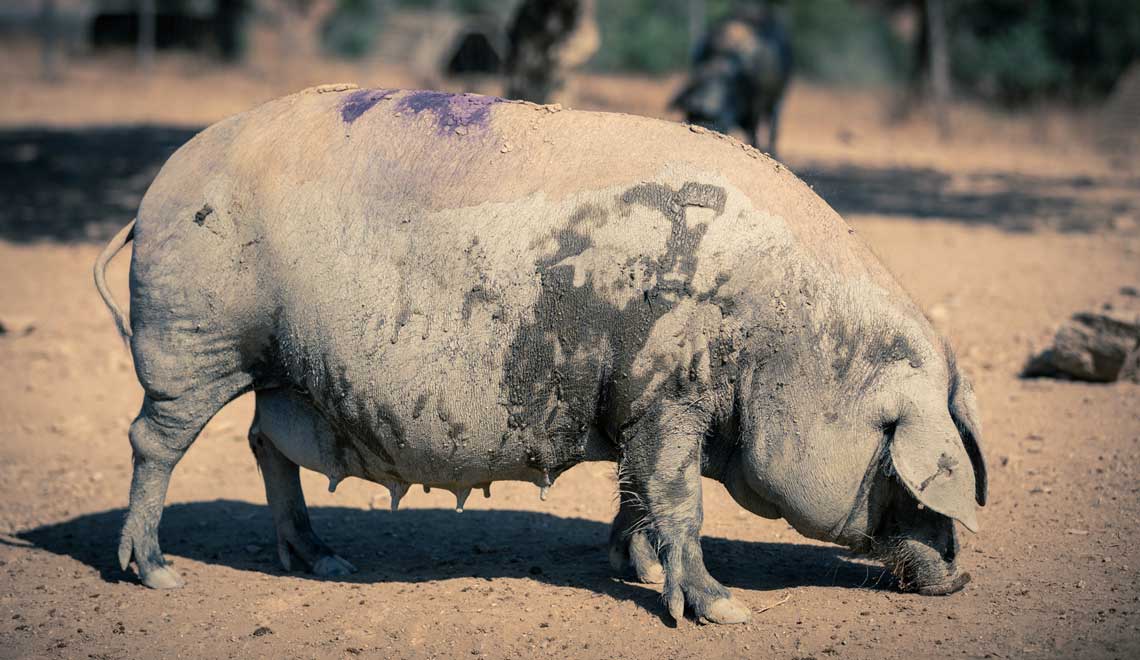
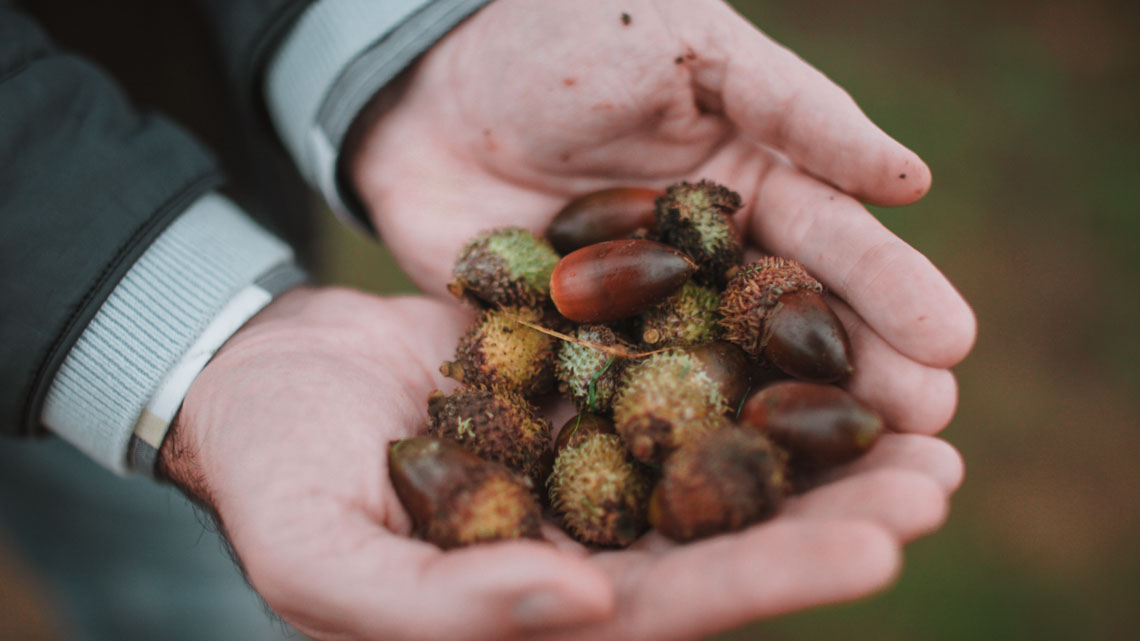
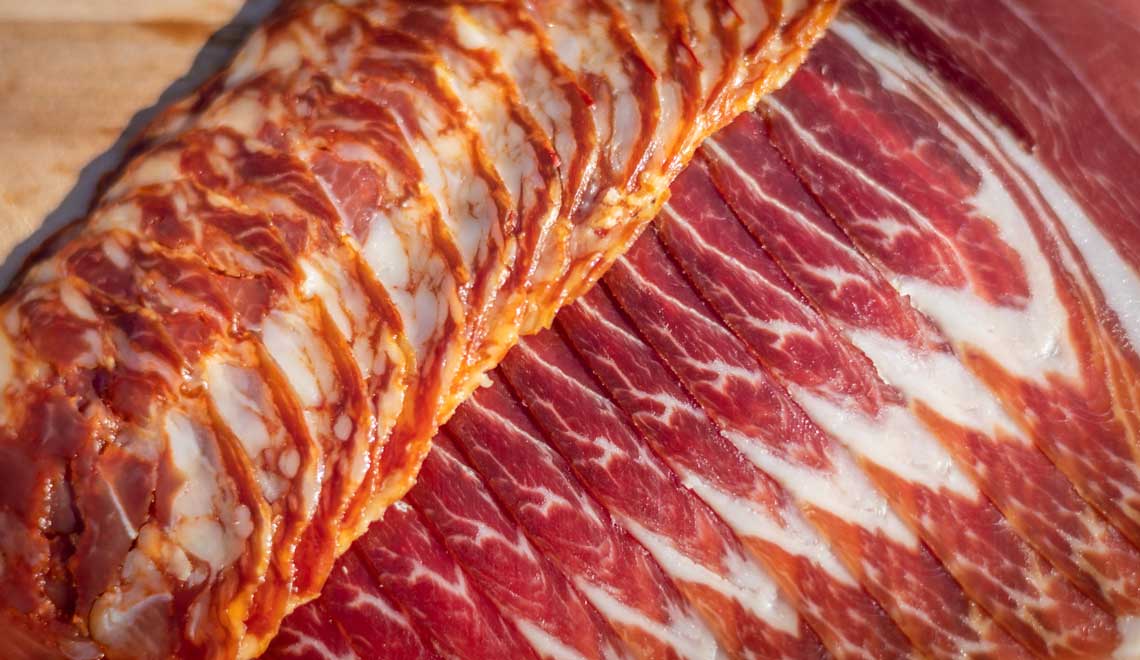
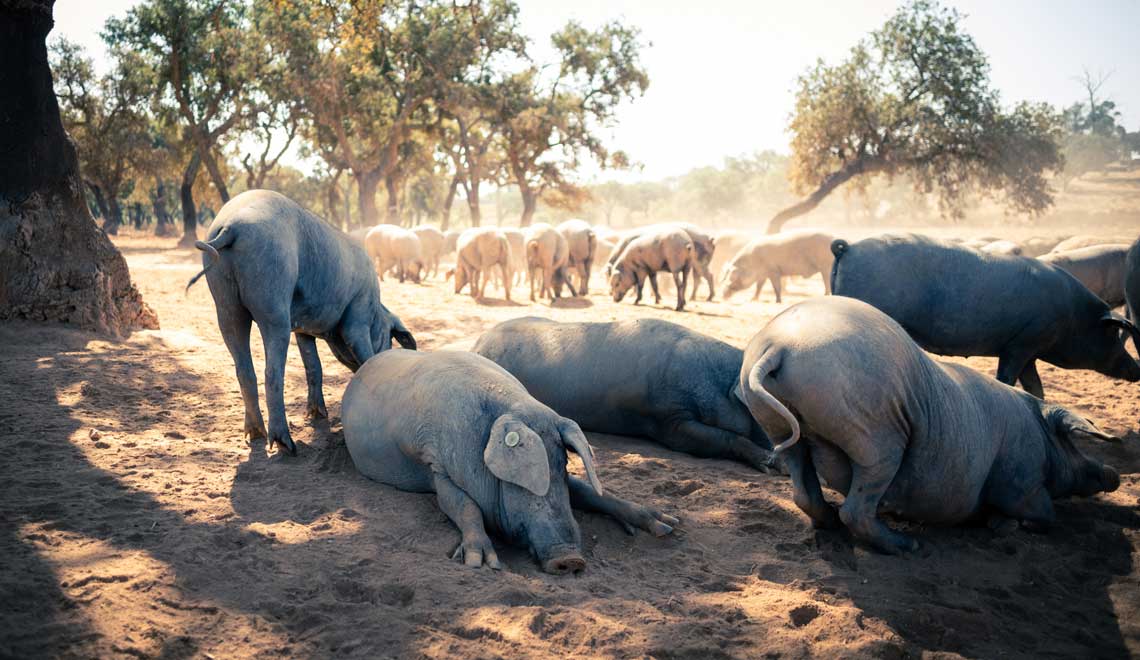

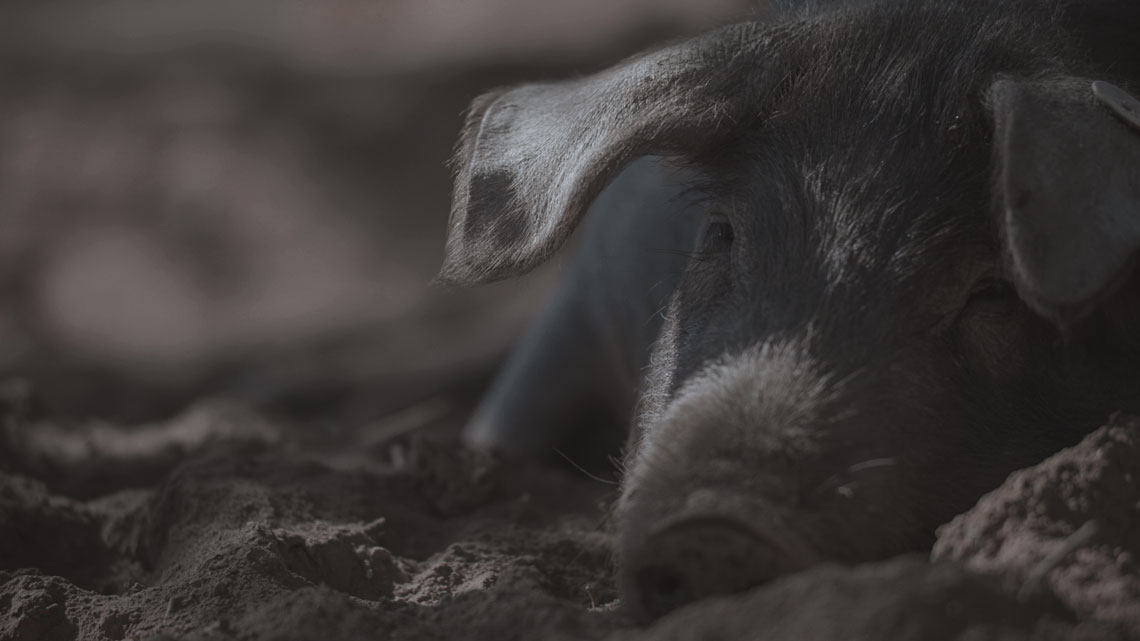
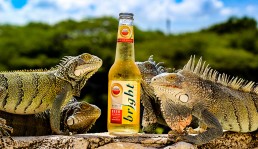
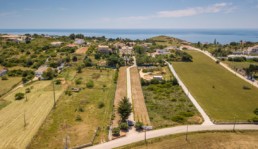








[…] (pork of the Iberian black pig) and is some of the best pork you will ever have! Here is a fabulous blog post about this cuisine. These piggies are the luckiest free range pigs in the world, gorging themselves […]